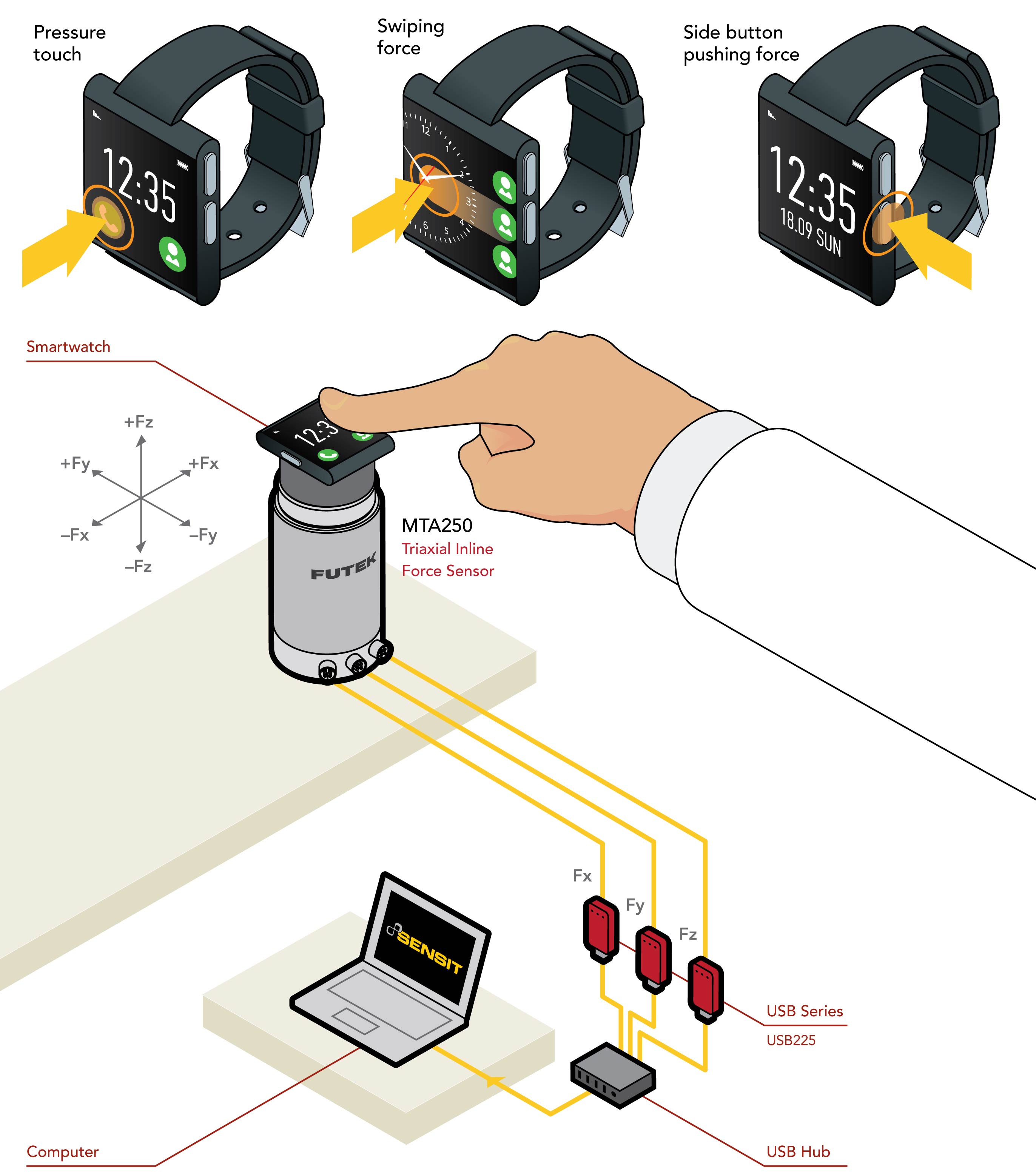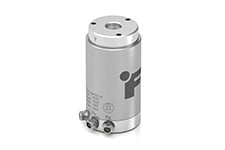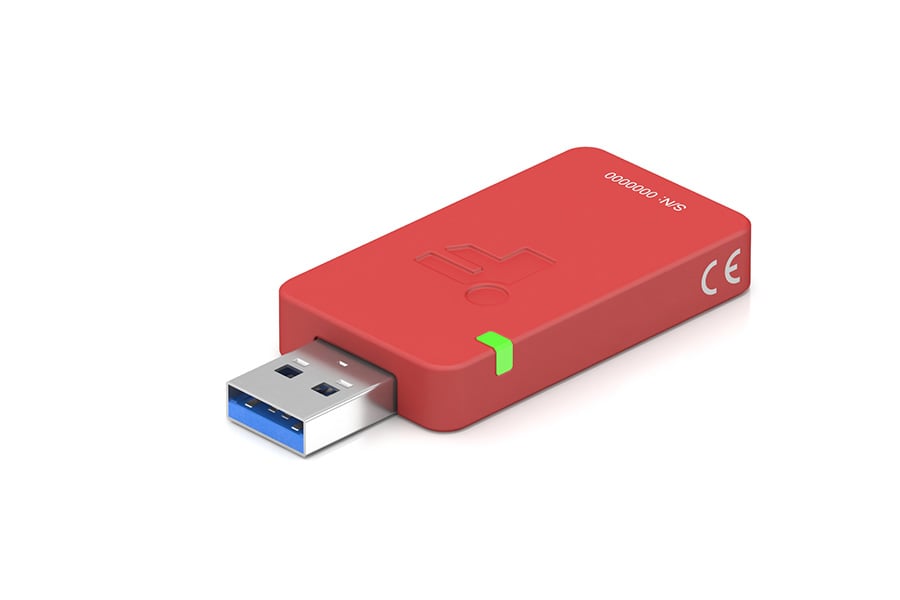Measuring and Interpreting Smartwatch Interaction Forces
Smartwatches offer a blend of convenience and innovation right at our fingertips. One aspect that supports user experience with these devices is the measurement and interpretation of interaction forces—a task that demands precision and insight.
The interaction forces exerted on a smartwatch are distinctly recognizable yet vary significantly with the type of tasks being performed. When texting, for instance, users might apply more force to ensure each tap registers the intended letter or emoji, given the small touch targets. This action often requires a deliberate press. In contrast, scrolling through an article or swiping between menus is generally performed with a lighter touch, a glide rather than a press, reflecting basic differences in the nature and intent of the interaction.
This variability extends to the features activated by different pressure levels on the same spot on the screen. A light tap might select an item, whereas a firmer press could open a context menu or a page, illustrating the device's capacity to differentiate between degrees of user intention based on force alone.
How are multi-axis force sensors used in smartwatches?
Multi-axis force sensors play a vital role in the early development stages of smartwatches, including during validation, verification, and prototype testing. These sensors are adept at capturing a wide array of data points regarding the direction and magnitude of forces applied by the user's finger, across multiple axes [Fx, Fy, and Fz]. This capability allows R&D engineers to have a comprehensive understanding of human factors design and how users interact with the device through different types of touches and swipes.
These detailed force profiles are extremely useful. By analyzing the variations in force for different tasks, engineers can adjust the screen's touch sensitivity to match real-world use. For example, recognizing that a function requires a force of X Newtons to activate a page and Y Newtons to access a certain function enables the engineering team to fine-tune the device's responsiveness. This ensures that users can achieve their desired outcomes without unnecessary force or repeated attempts, thereby enhancing the overall user experience.
Moreover, these insights into interaction forces allow engineers to predict and extend the lifespan of screen sensors and side buttons. Understanding the range and frequency of forces applied helps in estimating the fatigue life of these components, guiding choices in materials and construction to withstand everyday use.
Why is FUTEK's MTA250 Inline 3-Axis Load Cell suitable for smartwatch interaction forces measurement?
The FUTEK MTA250 Inline 3-Axis Load Cell excels in measuring interaction forces in smartwatches due to its finely tuned precision and design, weighing only 0.26 lb, dimensions of 2.55” H x 1.33” D, and capable of safely handling overloads up to 300%, which are optimized for capturing Fx, Fy, and Fz forces, making it suitable during design stages and to the demands of smartwatch interaction forces measurement for validation and verification.
Furthermore, its compatibility with the FUTEK USB family allows for seamless integration with FUTEK’s digital signal conditioners and amplifiers, offering real-time data processing and feedback. The addition of a connectorized cable simplifies the installation and maintenance process, emphasizing the MTA250's versatility and efficiency for smartwatch interaction force validation and verification, where both precision and reliability are necessary.
How it Works
Multi-axis Force Sensor: FUTEK's MTA250 tri-axial inline force sensor measures the interaction forces from the smartwatch across multiple axis (Fx, Fy, and Fz).
Signal Conditioning: FUTEK's USB225 Pro Elite is an ideal choice to integrate with MTA250 Inline 3-Axis Load Cell , as it offers high-speed signal sampling (up to 38,400 SPS) and advanced filtering capabilities. This ensures precise capture of interaction forces, enabling detailed analysis on forces measurement for validation and verification.
Data Logging and Analysis: To record and analyze the interaction forces, reliable data logging software is essential. FUTEK's SENSIT data logging software combined with the load cell and the signal conditioner provides a comprehensive solution for capturing, conditioning, logging, visualizing, and interpreting the force data obtained from smartwatch testing and development.
Contact Us
Please Contact Us with questions.
Measuring and Interpreting Smartwatch Interaction Forces
Smartwatches offer a blend of convenience and innovation right at our fingertips. One aspect that supports user experience with these devices is the measurement and interpretation of interaction forces—a task that demands precision and insight.
The interaction forces exerted on a smartwatch are distinctly recognizable yet vary significantly with the type of tasks being performed. When texting, for instance, users might apply more force to ensure each tap registers the intended letter or emoji, given the small touch targets. This action often requires a deliberate press. In contrast, scrolling through an article or swiping between menus is generally performed with a lighter touch, a glide rather than a press, reflecting basic differences in the nature and intent of the interaction.
This variability extends to the features activated by different pressure levels on the same spot on the screen. A light tap might select an item, whereas a firmer press could open a context menu or a page, illustrating the device's capacity to differentiate between degrees of user intention based on force alone.
How are multi-axis force sensors used in smartwatches?
Multi-axis force sensors play a vital role in the early development stages of smartwatches, including during validation, verification, and prototype testing. These sensors are adept at capturing a wide array of data points regarding the direction and magnitude of forces applied by the user's finger, across multiple axes [Fx, Fy, and Fz]. This capability allows R&D engineers to have a comprehensive understanding of human factors design and how users interact with the device through different types of touches and swipes.
These detailed force profiles are extremely useful. By analyzing the variations in force for different tasks, engineers can adjust the screen's touch sensitivity to match real-world use. For example, recognizing that a function requires a force of X Newtons to activate a page and Y Newtons to access a certain function enables the engineering team to fine-tune the device's responsiveness. This ensures that users can achieve their desired outcomes without unnecessary force or repeated attempts, thereby enhancing the overall user experience.
Moreover, these insights into interaction forces allow engineers to predict and extend the lifespan of screen sensors and side buttons. Understanding the range and frequency of forces applied helps in estimating the fatigue life of these components, guiding choices in materials and construction to withstand everyday use.
Why is FUTEK's MTA250 Inline 3-Axis Load Cell suitable for smartwatch interaction forces measurement?
The FUTEK MTA250 Inline 3-Axis Load Cell excels in measuring interaction forces in smartwatches due to its finely tuned precision and design, weighing only 0.26 lb, dimensions of 2.55” H x 1.33” D, and capable of safely handling overloads up to 300%, which are optimized for capturing Fx, Fy, and Fz forces, making it suitable during design stages and to the demands of smartwatch interaction forces measurement for validation and verification.
Furthermore, its compatibility with the FUTEK USB family allows for seamless integration with FUTEK’s digital signal conditioners and amplifiers, offering real-time data processing and feedback. The addition of a connectorized cable simplifies the installation and maintenance process, emphasizing the MTA250's versatility and efficiency for smartwatch interaction force validation and verification, where both precision and reliability are necessary.


